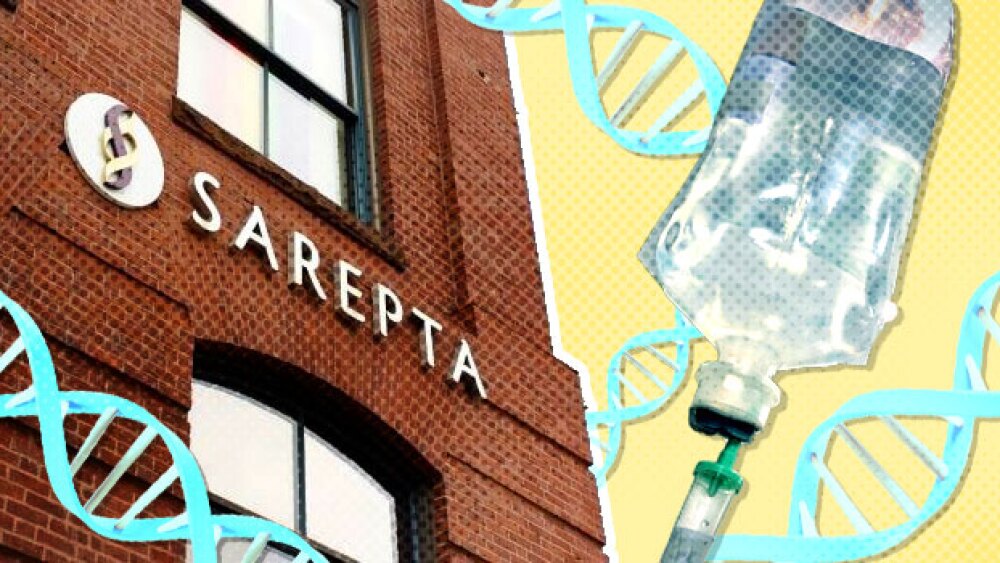CAMBRIDGE, Mass.--(BUSINESS WIRE)--WAVE Life Sciences Ltd. (NASDAQ: WVE), a genetic medicines company focused on developing targeted therapies for patients impacted by rare diseases, today announced updates to its clinical pipeline for 2017.
“2017 will be an important year for WAVE as we transition our two lead candidates in Huntington’s disease and our exon-skipping candidate in Duchenne Muscular Dystrophy into clinical trials”
“2017 will be an important year for WAVE as we transition our two lead candidates in Huntington’s disease and our exon-skipping candidate in Duchenne Muscular Dystrophy into clinical trials,” said Paul Bolno, M.D., MBA, President and Chief Executive Officer of WAVE Life Sciences. “Furthermore, we plan to select three additional proprietary candidates this year which will keep us on track to initiate six development programs by the end of 2018, each with the potential to make a meaningful impact to patients with rare genetic diseases.”
Updated clinical development plan for lead Huntington’s disease (HD) programs WVE-120101 and WVE-120102
Informed by discussions with the FDA and with supportive interim data from ongoing multi-dose toxicology studies, WAVE intends to refile its Investigational New Drug (IND) Application for WVE-120101 (SNP-1) and to file its IND for WVE-120102 (SNP-2) in the first half of 2017. The company’s initial plan was to complete a single-ascending-dose phase prior to initiation of the multi-dose portion of the trial. With the updated trial design, the company intends to move straight to two simultaneous multi-ascending-dose (MAD) studies, potentially accelerating time to proof-of-concept.
As part of the company’s HD global development strategy, WAVE remains on track to file a Clinical Trial Application (CTA) in Europe in the first half of 2017. Both SNP-1 and SNP-2 allele-specific HD programs are expected to enter the clinic in mid-2017.
WVE-120101 and WVE-120102 each target a distinct patient population, which together account for over two-thirds of the HD population. Each therapeutic candidate is designed to selectively silence mRNA transcript produced by the disease-causing mutant huntingtin (HTT) allele in order to reduce the mutant HTT protein while leaving the healthy HTT allele intact to produce normal functioning protein. If approved, WVE-120101 and WVE-120102 would be the first allele-specific therapies for Huntington’s disease patients. Huntington’s disease is an autosomal dominant genetic disorder, involving the HTT gene, characterized by chorea, psychiatric illness and cognitive decline. HD is a devastating condition that is invariably fatal affecting over 30,000 symptomatic individuals in the United States alone, with no approved disease-modifying therapies currently available.
Duchenne Muscular Dystrophy program entering clinic in 2H 2017
WAVE has selected its stereopure exon-skipping candidate, WVE-210201, to target deletions of Exon 51. Pre-clinical quantitative Western blot studies of WAVE’s DMD Exon 51 candidate demonstrated 52% dystrophin protein restoration as compared with normal skeletal muscle tissue lysates, versus approximately 1% when testing other exon-skipping therapies. WAVE is developing clinical trial protocol in collaboration with the DMD community and intends to include both ambulatory and non-ambulatory patients in the study as well as those previously treated with other exon skipping therapies. GMP manufacturing is underway to support planned clinical trials to ensure adequate supply for current and planned studies. The company is on track to initiate a global clinical program in the second half of 2017.
Continued progress unlocking value in adjacent therapeutic areas
WAVE continues to make progress under its collaboration with Pfizer to develop genetically targeted therapies for the treatment of metabolic diseases, including NASH and NAFLD, with three programs advancing through lead-optimization, including ApoC-III programs. The collaboration leverages WAVE’s stereochemistry platform across antisense and RNAi modalities and incorporates GalNAc and Pfizer’s hepatic targeting technology. The remaining two Pfizer collaboration programs are expected to commence by November 2017.
Establishing internal GMP manufacturing capabilities
To provide internal GMP manufacturing capabilities and increase control and visibility of our manufacturing supply chain, WAVE recently signed a lease for a manufacturing facility of approximately 90,000 square feet in Lexington, MA. This new facility supplements WAVE’s existing Cambridge, MA headquarters, supports growth and secures availability of drug product for current and future development activities and potential commercial-scale manufacturing.
About WAVE Life Sciences
At WAVE Life Sciences, we are driven by an unwavering passion and commitment to deliver on our mission of confronting challenging diseases by developing transformational therapies and empowering patients. We are utilizing our innovative and proprietary synthetic chemistry drug development platform to design, develop and commercialize rationally redesigned nucleic acid therapeutics that precisely target the underlying cause of rare and other serious genetically defined diseases. Given the versatility of our chemistry platform, WAVE’s deep, diverse pipeline spans multiple modalities including antisense, exon-skipping, and single-stranded RNAi. For more information, please visit www.wavelifesciences.com.
Forward Looking Information
This press release contains forward-looking statements concerning our goals, beliefs, expectations, strategies, objectives and plans, and other statements that are not necessarily based on historical facts, including statements regarding the following: the anticipated timing of our IND filings and the commencement of our clinical trials; the design and anticipated goals of our clinical trials; the future performance and results of our programs in clinical trials; the progress and potential benefits of our collaborations with partners; our identification of future candidates and their therapeutic potential; the anticipated therapeutic benefits of stereopure therapies compared to other therapies; our advancing of therapies across multiple modalities and the anticipated benefits of that strategy; our future growth; and the potential of our stereopure approach and nucleic acid therapeutics generally. Actual results may differ materially from those indicated by these forward-looking statements as a result of various important factors, including the following: the ability of our preclinical programs to produce data sufficient to support the filing of INDs and the timing thereof; our ability to continue to build and maintain the company infrastructure and personnel needed to achieve our goals; the clinical results of our programs, which may not support further development of product candidates; actions of regulatory agencies, which may affect the initiation, timing and progress of clinical studies; our effectiveness in managing future clinical trials and regulatory processes; the success of our platform in identifying viable candidates; the continued development and acceptance of nucleic acid therapeutics as a class of drugs; our ability to demonstrate the therapeutic benefits of our stereopure candidates in clinical trials, including our ability to develop candidates across multiple therapeutic modalities; our ability to obtain, maintain and protect intellectual property; our ability to enforce our patents against infringers and defend our patent portfolio against challenges from third parties; our ability to raise additional capital as needed; and competition from others developing therapies for similar uses, as well as the information under the caption “Risk Factors” contained in our Annual Report on Form 10-K filed with the Securities and Exchange Commission (SEC) on March 30, 2016 and in other filings we make with the SEC. We undertake no obligation to update the information contained in this press release to reflect subsequently occurring events or circumstances.




